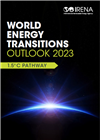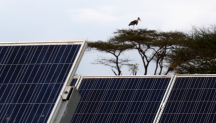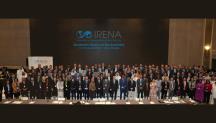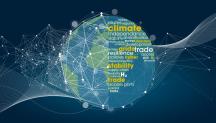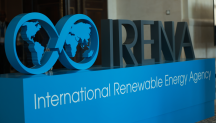
-
-
IRENA (2023), World Energy Transitions Outlook 2023: 1.5°C Pathway, Volume 1, International Renewable Energy Agency, Abu Dhabi.
Copied
https://mc-cd8320d4-36a1-40ac-83cc-3389-cdn-endpoint.azureedge.net/-/media/Files/IRENA/Agency/Publication/2023/Jun/IRENA_World_energy_transitions_outlook_2023.pdf?rev=db3ca01ecb4a4ef8accb31d017934e97
Copied
World Energy Transitions Outlook 2023: 1.5°C Pathway
Newsletter
The scale of the global climate emergency has become ever more obvious in recent years, with record high temperatures and extreme weather events linked to climate change occurring around the globe.
The success achieved this decade in reducing greenhouse gas emissions will determine whether global temperature rise can be limited to 1.5°C of pre-industrial levels this century, in line with the objectives of the Paris Agreement. IRENA’s 1.5°C Scenario, set out in the World Energy Transitions Outlook, presents a pathway to achieve the 1.5°C target by 2050, positioning electrification and efficiency as key transition drivers, enabled by renewable energy, clean hydrogen and sustainable biomass.
The first volume of the 2023 Outlook provides an overview of progress by tracking implementation and gaps across all energy sectors, and identifies priority areas and actions based on available technologies that must be realised by 2030 to achieve net zero emissions by mid-century.
It also provides three key pillars that can form the foundations for action to realign the global energy transition with climate objectives: building the necessary infrastructure and investing at scale to accommodate new production locations, trade patterns and demand centres; advancing a policy and regulatory architecture that can facilitate targeted investments, and improve socio-economic and environmental outcomes; and a strategic realignment of institutional capacities to help ensure that skills and capabilities match an energy system that integrates a high share of renewables.
To date, policymakers have concentrated on the technological, institutional, regulatory and policy facets of the energy transition, with limited attention to its socio-economic implications. Volume 2 of the World Energy Transitions Outlook 2023 contends that current transition narratives may not resonate with all stakeholders, largely due to their omission of central socio-economic dimensions. Bridging gaps in climate policy ambition and fostering essential structural changes necessitates unparallel global collaboration.
The second volume is based on IRENA’s macro-econometric modelling work and provides policymakers with insights into how economic activity, employment and wellbeing may be affected under the 1.5°C pathway, compared to current policy settings. It adopts a comprehensive approach that includes a set of supportive policies within the 1.5°C pathway designed to facilitate structural changes and empower countries to fully leverage the socio-economic opportunities that arise during the energy transition.
Volume 2 also employs IRENA’s welfare index, comprising five dimensions (economic, social, environmental, distributional and access), to delve deeper into the socio-economic analysis of the energy transition. Human welfare improves in all countries and regions under the 1.5°C Scenario.
